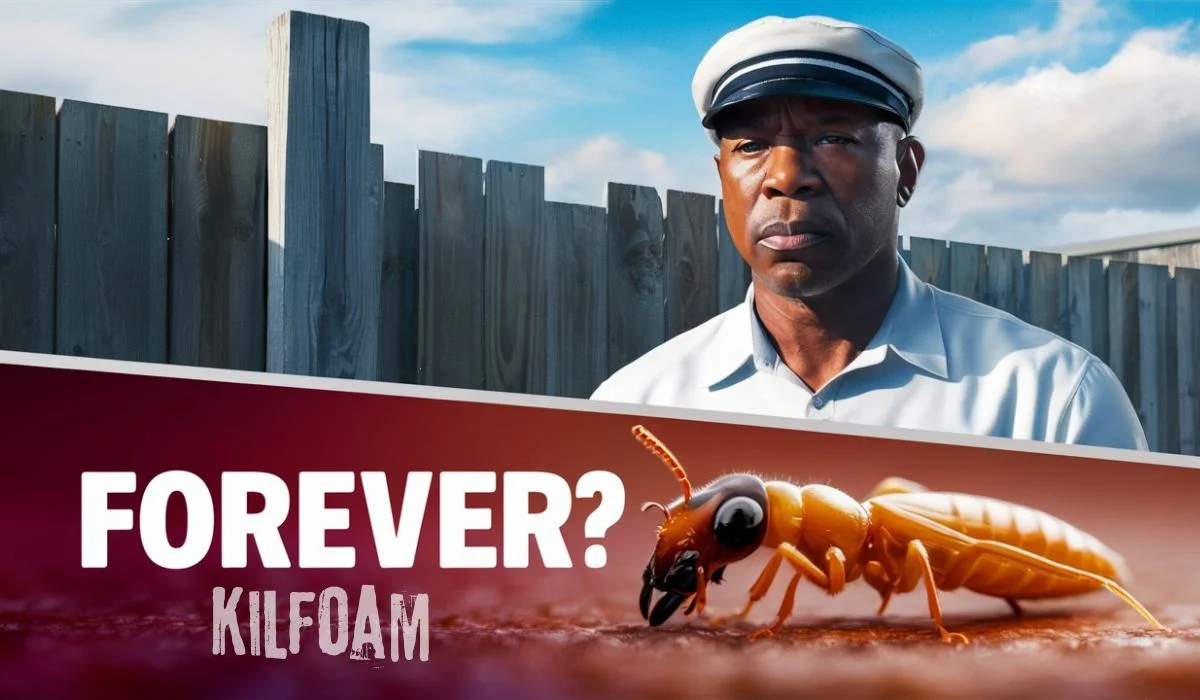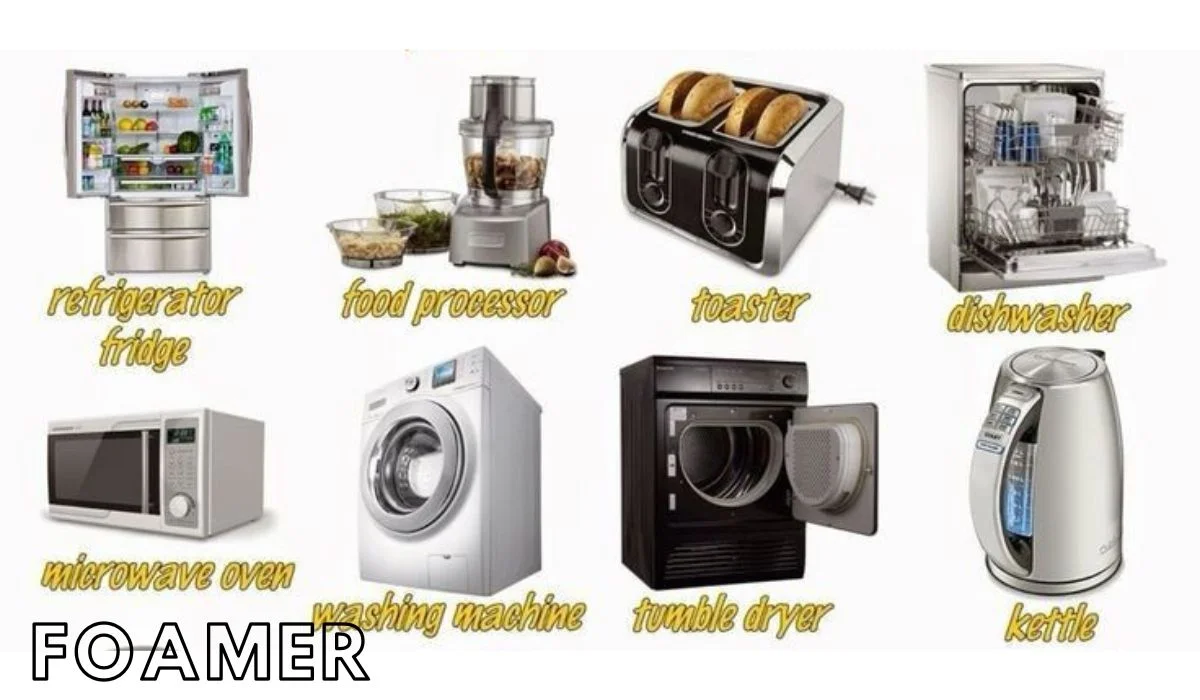When it comes to dealing with pests in your home, termites can be some of the most destructive and costly. Among the different types of termites, drywood termites are notorious for silently infesting homes, causing significant structural damage over time. Fortunately, there’s a specialized solution to address this specific threat—Kilfoam. Designed exclusively to target drywood (flying) termites, Kilfoam has become a go-to treatment for homeowners looking to protect their properties without the hassle and expense of more invasive treatments.
This article explores what Kilfoam is, how it works, and why it’s the right choice for homes not at risk for subterranean termite infestations. We’ll also cover application methods, safety considerations, and how it compares to other termite treatment options. By the end, you’ll have a clear understanding of why Kilfoam could be the termite treatment solution for your home.
What Is Kilfoam?
Kilfoam is a specialized termite treatment designed to target drywood termites, which differ from their subterranean counterparts in that they do not require contact with soil to thrive. Drywood termites live inside the wood they consume, often going undetected for years. As a foam-based treatment, Kilfoam infiltrates termite colonies deep within wooden structures, effectively eliminating them without the need for traditional tenting or fumigation processes.
Trending: Fibra : Pioneering Sustainable Fibre Crops for a Greener Future
While some treatments require extensive preparation, Kilfoam offers a simpler, more convenient approach for drywood termite infestations, allowing homeowners to avoid the disruption of tenting their homes. It is specifically tailored for properties that are not susceptible to subterranean termites, making it an ideal option for homes built in areas with a low risk of subterranean termite activity.
How Kilfoam Works
The power of Kilfoam lies in its unique foam formulation. Unlike liquid treatments or bait systems, Kilfoam is designed to expand, penetrating deep into termite galleries inside the wood. This allows the foam to reach areas that might otherwise be inaccessible, ensuring that every part of the termite colony is exposed to the treatment.
Key Features of Kilfoam:
- Foam expansion: The foam expands once applied, allowing it to fill cracks, crevices, and other hard-to-reach areas where drywood termites may be hiding.
- Deep penetration: Because drywood termites live inside the wood they infest, it’s critical for the treatment to penetrate deep within the wooden structures. Kilfoam does just that, ensuring a thorough application.
- Residue effect: Kilfoam leaves a residue that remains effective for an extended period, killing termites over time and preventing reinfestation.
How Does Kilfoam Compare to Liquid Treatments?
Traditional liquid termite treatments are often designed for subterranean termites, which live underground and build mud tubes to access the wood in homes. Liquid treatments typically require trenching around a home’s foundation and injecting termiticide into the soil. This is not the case with Kilfoam, which is designed for drywood termites and requires no soil application. By targeting the wood directly, Kilfoam is not only more effective for drywood termites but also less invasive to apply.
Application of Kilfoam
One of the major advantages of Kilfoam is its ease of application compared to other termite treatments. Rather than requiring tenting or fumigation, Kilfoam can be applied directly to the affected areas. This reduces disruption to your home and offers a more convenient solution for homeowners.
Professional Application vs. DIY
While Kilfoam can be applied by professionals who are licensed pest control experts, there are also DIY options available for smaller infestations. For larger infestations or if you’re unsure about the extent of the problem, it’s always best to consult a professional pest control service to assess the situation and ensure proper application.
Step-by-Step Application Process:
- Inspection: First, inspect your home for signs of drywood termite activity, such as discarded wings, frass (termite droppings), and hollow-sounding wood. A professional termite inspection can also be beneficial to assess the extent of the infestation.
- Drill and apply: Kilfoam is applied by drilling small holes into the wood where termites are active. Once the holes are drilled, the foam is injected directly into the wood. As the foam expands, it fills the galleries where termites live.
- Monitor results: After the application, monitor the treated areas for continued signs of termite activity. Kilfoam’s residual effect ensures that any surviving termites are eliminated over time.
- Seal holes: Once the treatment is complete, the drilled holes can be sealed with wood filler or another appropriate material, restoring the wood’s appearance.
Safety and Environmental Considerations
When choosing a termite treatment, safety is a major concern for many homeowners. Fortunately, Kilfoam is designed with safety in mind, both for users and the environment.
Safety for Homeowners
Because Kilfoam is injected directly into the wood and doesn’t require extensive tenting or fumigation, there is minimal risk of exposure to harmful chemicals. Homeowners can remain in their homes during the application process, reducing the inconvenience typically associated with termite treatments. Additionally, the foam itself is designed to break down over time, leaving behind a residue that remains toxic only to termites, not humans or pets.
Environmental Impact
Kilfoam is also considered an eco-friendly solution when compared to more aggressive fumigation methods. Since it targets drywood termites directly, it reduces the need for widespread chemical application. This makes it a more sustainable option for homeowners looking to protect their property without negatively impacting the surrounding environment.
Benefits of Using Kilfoam
For homeowners facing a drywood termite infestation, Kilfoam offers numerous benefits that set it apart from other treatment options. Let’s take a closer look at the advantages of choosing Kilfoam for termite control:
1. Targeted Treatment for Drywood Termites
Kilfoam is designed specifically for drywood termites, making it an ideal solution for homes at risk of this particular type of infestation. Unlike subterranean termites, which require soil contact, drywood termites can thrive in wooden structures alone. Kilfoam’s formulation is specifically engineered to address this unique challenge by penetrating deep into termite galleries within the wood.
2. Non-Invasive Application
One of the most attractive aspects of Kilfoam is its non-invasive application process. Unlike traditional termite treatments that require tenting or soil trenching, Kilfoam is injected directly into the wood, avoiding the need for homeowners to vacate their properties. This makes Kilfoam a more convenient and less disruptive option for treating termite infestations.
3. Long-Lasting Protection
After the foam expands and penetrates termite galleries, it leaves behind a residual effect that continues to protect the treated areas from future infestations. This long-lasting protection means that homeowners can enjoy peace of mind knowing their property is safeguarded against further termite damage.
4. Cost-Effective
Kilfoam’s targeted treatment approach can also be more cost-effective compared to other termite treatments that involve extensive preparation, such as fumigation. Homeowners who catch a drywood termite infestation early can often address the issue with a single application of Kilfoam, potentially saving thousands in repairs and additional treatments.
Signs of a Drywood Termite Infestation
Recognizing the signs of a drywood termite infestation early is critical to preventing significant damage to your home. Since drywood termites don’t build mud tubes like subterranean termites, their presence can be harder to detect. Here are some common indicators to watch for:
- Discarded Wings: Drywood termites shed their wings after swarming. If you notice small piles of discarded wings around windows or doors, it could be a sign of a termite infestation.
- Frass: Termites leave behind tiny pellets of excrement, known as frass, which look like small grains of wood-colored sand. Piles of frass near wooden structures can indicate termite activity.
- Hollow-Sounding Wood: Drywood termites eat away at the inside of wood, leaving the outer surface intact. Tapping on affected wood may produce a hollow sound, signaling that termites have tunneled inside.
- Termite Swarmers: During warm weather, termites may swarm in search of new locations to establish colonies. Seeing swarms of flying insects around your home is a sure sign that termites may be nearby.
Kilfoam vs. Traditional Termite Treatments
When comparing Kilfoam to other termite treatments, there are several factors to consider, including the type of termite being targeted, the extent of the infestation, and the overall convenience of the treatment process.
Kilfoam
- Targets drywood termites specifically.
- Requires no tenting or fumigation.
- Can be applied locally to the infested area.
- Offers long-lasting protection with a single treatment.
- Less disruptive for homeowners compared to traditional methods.
Traditional Fumigation
- Targets both drywood and subterranean termites.
- Requires the entire home to be tented and fumigated.
- Homeowners must vacate their homes during the process.
- Typically more expensive and time-consuming.
- May be necessary for extensive infestations.
For homeowners dealing with drywood termites, Kilfoam offers a more convenient, targeted, and cost-effective solution. While fumigation may be necessary for larger or more severe infestations, Kilfoam provides a viable alternative for those looking to avoid the disruption of traditional methods.
Conclusion
In the battle against drywood termites, Kilfoam offers a powerful, convenient, and effective solution. Its targeted foam treatment infiltrates termite galleries deep within wooden structures, providing long-lasting protection without the need for invasive fumigation or tenting. For homeowners looking for a termite treatment that’s both efficient and eco-friendly, Kilfoam stands out as the best option.
By choosing Kilfoam, you can protect your home from the costly damage that drywood termites cause while avoiding the hassle and expense of traditional treatments. If your home isn’t at risk for subterranean termite infestations, then Kilfoam is the perfect treatment for you.




